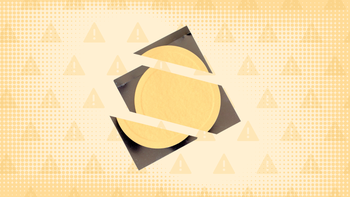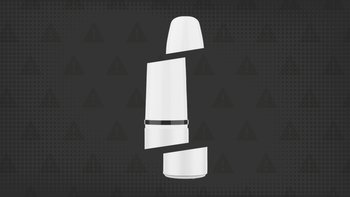
How to Chew Nicotine Gum and Other FAQs Answered About Nicorette
Key takeaways:
Nicotine gum (Nicorette) is a type of nicotine replacement therapy (NRT). It works by providing your body with a clean form of nicotine. It doesn’t have any of the harmful chemicals that are in cigarettes.
Knowing how to chew nicotine gum will help you get the maximum benefit, and prevent side effects. In general, you’ll chew the gum until you feel a tingling sensation, and then “park” it between your gum and cheek for about 1 minute. You’ll repeat this process until you no longer feel a tingling sensation, usually about 30 minutes.
Nicotine gum is safe for most people, but mild side effects may include nausea and headache. Nicotine gum can also increase your blood pressure and heart rate.
Table of contents

Quitting smoking is one of the best things you can do to improve your health. Using medications, such as nicotine replacement therapy (NRT) products, is one way to help you quit smoking.
Nicotine gum (Nicorette) is one type of NRT that helps reduce nicotine cravings and withdrawal symptoms. But before you pick up your first pack, there’s a few things to learn about how to chew nicotine gum. For one, chewing nicotine gum is different from how you would chew regular gum. We’ll cover all of that below, as well as answer several other frequently asked questions.
1. How do you chew nicotine gum?
Nicotine gum is chewed differently than regular chewing gum. With nicotine gum, you alternate between chewing the gum and “parking” it, according to the steps below:
Place nicotine gum in your mouth and slowly bite down on it.
Once you feel a tingle in your mouth, stop chewing. Then, “park” the gum between the inside of your cheek and your gums. Holding the gum in this position lets your body absorb the nicotine. Do this for about a minute.
Begin chewing the gum again until you feel a tingle in your mouth, and then “park” it again. Continue repeating this process until you no longer feel tingling in your mouth. This typically takes about 30 minutes. Rotate the areas where you “park” the gum in your mouth each time.
Good to know: Avoid eating or drinking while chewing nicotine gum. You should also wait at least 15 minutes before and after chewing the gum to eat or drink. Food and drinks can affect how well the nicotine gum is absorbed.
Comparing NRT products: Several nicotine replacement therapy (NRT) products are available to help you quit smoking. Learn about your options and how to combine them for best results.
Non-NRT medications to help you quit: Bupropion sustained-release (Zyban, Wellbutrin-SR) and varenicline (Chantix) are prescription medications that can help you quit smoking. But which is best for you?
Is any amount of smoking considered safe? Simply put, the answer is no. Any amount of smoking, including sporadic social smoking, is bad for your health.
2. How long should you chew nicotine gum?
One piece of nicotine gum usually lasts about 30 minutes. You’ll know that you're done chewing the nicotine gum when you stop feeling the tingling sensation in your mouth.
When this happens, it’s a sign that there’s no more nicotine left in the gum, and you can spit it out into a trash can at this point.
Good to know: If you’re still having nicotine cravings after chewing one piece of nicotine gum, you can chew another piece. But don’t chew more than two pieces back to back, and don’t chew more than one piece at a time.
3. How does nicotine gum work?
Nicotine gum works by replacing the nicotine from cigarettes with a clean form of nicotine. While harmful chemicals are found in cigarettes, nicotine gum contains nicotine alone, without any of these toxic ingredients.
When you chew nicotine gum, your cravings for cigarettes decrease because your body is getting nicotine. This also helps minimize nicotine withdrawal symptoms, such as irritability, restlessness, and nausea.
Nicotine gum comes in 2 mg and 4 mg doses. If you’re using the 2 mg dose and still having cravings for cigarettes, you can try increasing to the 4 mg dose. When making the switch, it’s best to talk to a healthcare professional to confirm that increasing your dose is safe.
4. How quickly does nicotine gum start working?
Nicotine gum works quickly. It takes just a few minutes for the nicotine from the gum to reach the brain.
Though the nicotine gum works quickly, it doesn’t release nicotine to the brain as fast as cigarettes do. This is why nicotine gum and other NRT products are less likely to be addictive compared to cigarettes, even though they both contain nicotine, which is an addictive substance.
5. How long does nicotine gum last?
Nicotine from the gum stays in your system for a few hours, but you won’t usually feel the effects for that long. That’s why nicotine gum is dosed frequently throughout the day (1 piece of gum every 1 to 2 hours).
Since nicotine gum is short-acting, it’s recommended to combine it with the nicotine patch (Nicoderm CQ, Habitrol). Short-acting nicotine gum addresses nicotine cravings, and the long-lasting nicotine patch releases a steady amount of nicotine into the bloodstream over a 24-hour period. This ensures that you have some level of nicotine in your system at all times.
6. How long should you take nicotine gum?
The manufacturer of nicotine gum recommends taking it for 12 weeks. However, you may need longer than 12 weeks to successfully quit smoking. And there’s research showing that a year or more of NRT use is likely safe, and may be more effective for some people.
If you don’t feel ready to stop using nicotine gum after 12 weeks, talk with a healthcare professional. They can discuss the best strategy for you moving forward.
7. Does nicotine gum cause weight gain or weight loss?
Nicotine gum itself isn’t known to cause weight gain or weight loss. But when you quit smoking, you may notice an increase in your appetite because nicotine is an appetite suppressant.
Additionally, your metabolism may slow down after quitting smoking, and you may feel more stressed, which can increase how much you eat.
If you’re worried about gaining weight after quitting smoking, talk with a healthcare professional. They can discuss healthy ways to manage your weight, including consuming nutrient-dense foods and getting regular exercise.
8. Is nicotine gum safe?
Nicotine replacement therapy, including nicotine gum, is considered safe for most people. However, all medications have risks, including side effects. Nicotine gum side effects are generally considered mild and may include:
Headache
Nausea
Hiccups
Heartburn
Sore throat
If you experience any of these side effects, make sure you’re using the nicotine gum correctly. This includes following the “park and chew” method, and waiting the appropriate amount of time in between doses (usually at least 1 to 2 hours). Using the nicotine gum incorrectly makes side effects more likely.
Though serious risks are rare, nicotine can increase your blood pressure and heart rate. So if you have existing heart issues, such as high blood pressure, heart disease, or a recent heart attack, talk to a healthcare professional before taking nicotine gum.
Additionally, nicotine gum can cause dependence and misuse. This is because nicotine is an addictive substance. However, this risk is significantly lower compared to smoking cigarettes. You can minimize your risk by using nicotine gum correctly and by not using it indefinitely. And avoid smoking cigarettes or using other tobacco products while using nicotine gum. This minimizes your risk of getting too much nicotine and helps you stay on track to quit smoking.
Good to know: Returning to smoking while using nicotine gum or other NRT products can make these side effects more likely. This is one reason it’s important to try and refrain from smoking while using NRT. However, quitting smoking isn’t easy and slipups happen. This doesn’t always mean you have to stop using NRT. So talk with a healthcare professional if you return to smoking while using NRT. They can help you adjust your dosage or switch to another smoking cessation medication if they think it could help you.
9. What are alternatives to nicotine gum?
Nicotine gum is one of several medications approved to help you quit smoking. Other NRT products include
Nicotine patch (Nicoderm CQ)
Nicotine lozenges (Nicorette)
Nicotine nasal spray (Nicotrol NS)
All NRT products except the nasal spray are available over-the-counter (OTC). Additionally, varenicline (Chantix) and bupropion sustained-release (Wellbutrin-SR) are FDA approved medications for smoking cessation. These two medications are available by prescription only, and are considered effective at helping you quit smoking.
The best treatment option for you depends on your personal health history, goals, and preferences. Working with a healthcare professional, or engaging in a smoking cessation program, can give you a better chance of finding the right treatment option. It can also increase your chances of quitting smoking.
How to save on nicotine gum
If you have insurance, it’s possible that nicotine gum will be partially or fully covered by your insurance plan. You can also use health savings accounts (HSAs) and flexible spending accounts (FSAs) funds to cover the cost.
Additionally, you can ask a healthcare professional for a nicotine gum prescription to help you receive a GoodRx discount for nicotine gum. With a prescription, GoodRx may be able to help you save over 60% off the average retail price of nicotine gum. At certain pharmacies, 100 pieces of gum may be as low as $14.63 with a free GoodRx coupon.
The bottom line
Nicotine gum (Nicorette) is a type of nicotine replacement therapy. It works by providing the body with a clean form of nicotine as you adapt to quitting cigarettes. But knowing how to chew nicotine gum is important. First, you'll slowly bite the gum. Once you feel a tingle in your mouth, you’ll stop chewing and “park” the gum between your gums and the inside of your cheek for about 1 minute. Then, begin chewing the gum again until you feel a tingle in your mouth, and repeat the process.
One piece of gum usually lasts about 30 minutes. You’ll know you’re finished when you no longer get a tingling sensation in your mouth after chewing it. Although nicotine gum is available OTC, working with a healthcare professional and/or engaging in a smoking cessation program can help improve your chances of quitting.
Why trust our experts?



References
Agboola, S., et al. (2010). A systematic review of the effectiveness of smoking relapse prevention interventions for abstinent smokers. Addiction.
Centers for Disease Control and Prevention. (2023). 7 Common withdrawal symptoms.
Centers for Disease Control and Prevention. (2023). How quit smoking medicines work.
Centers for Disease Control and Prevention. (2023). How to use nicotine gum.
Jo, Y. H., et al. (2002). Nicotinic receptor-mediated effects on appetite and food intake. Journal of Neurobiology.
Lee, J. E., et al. (2022). Unintentional fatal toxicity due to nicotine chewing gum: A case report. Medicine.
Moore, D., et al. (2009). Effectiveness and safety of nicotine replacement therapy assisted reduction to stop smoking: Systematic review and meta-analysis. BMJ.
Quality Choice (Chain Drug Marketing Association). (2023). Nicotine polacrilex gum [package insert].
Sandhu A, et al. (2020). Nicotine replacement therapy. StatPearls.
Was this page helpful?
Related Articles
Browse medications
View AllResearch prescriptions and over-the-counter medications from A to Z, compare drug prices, and start saving.




























